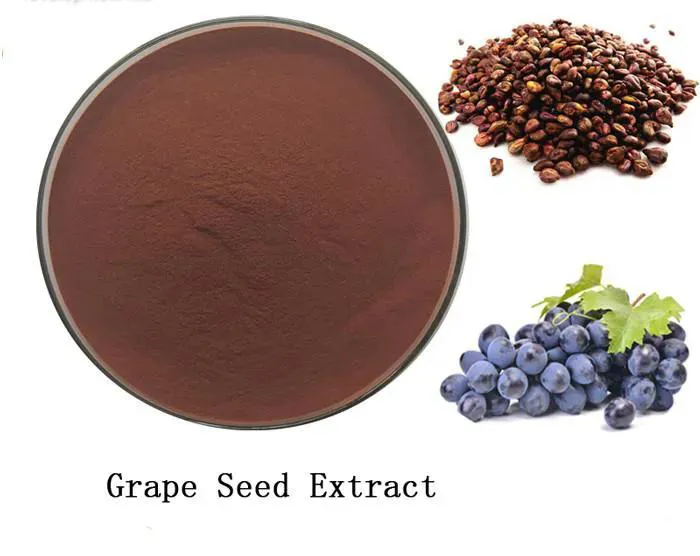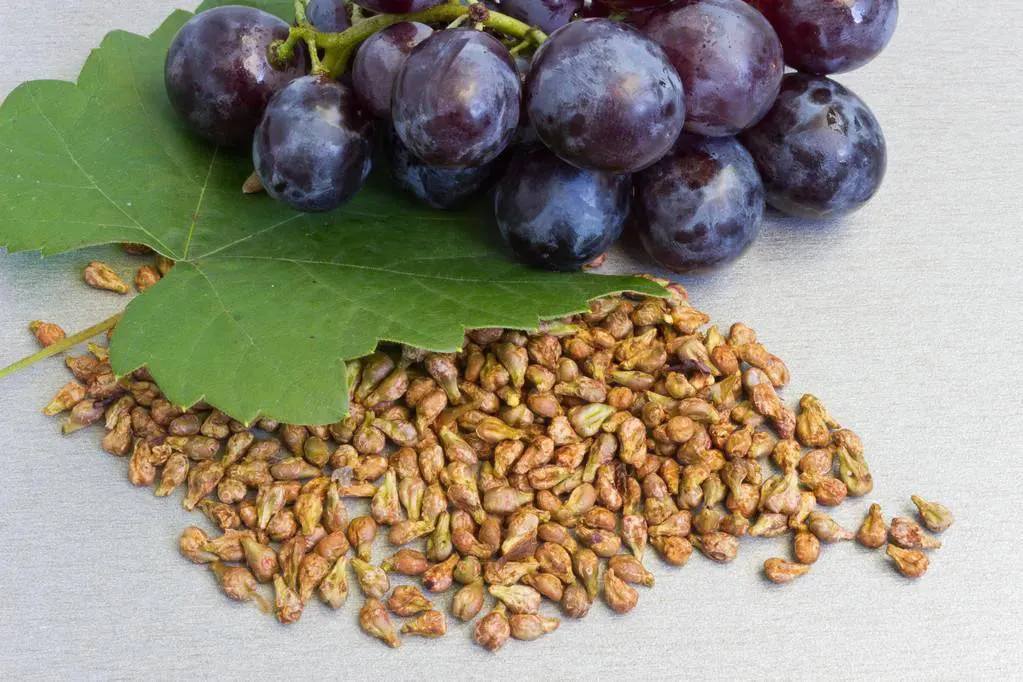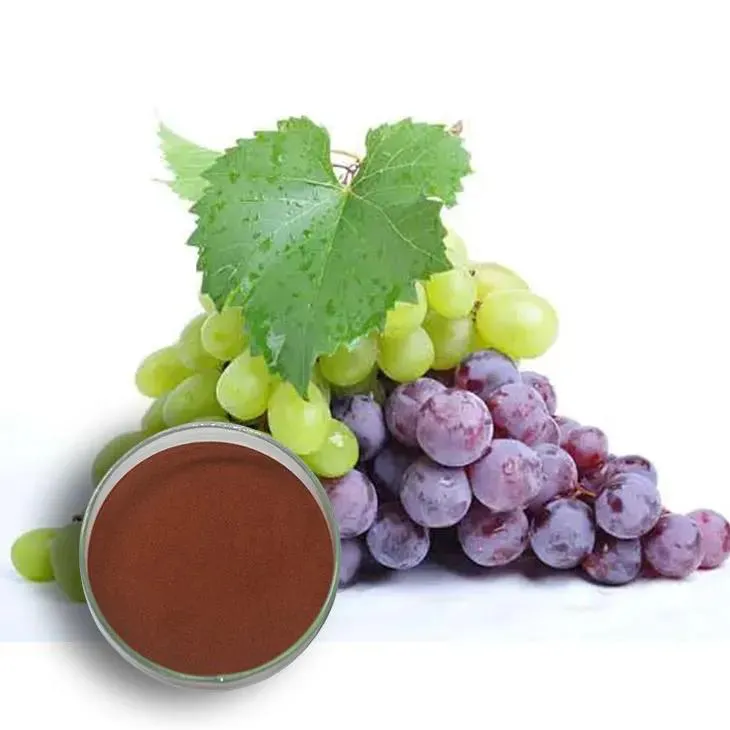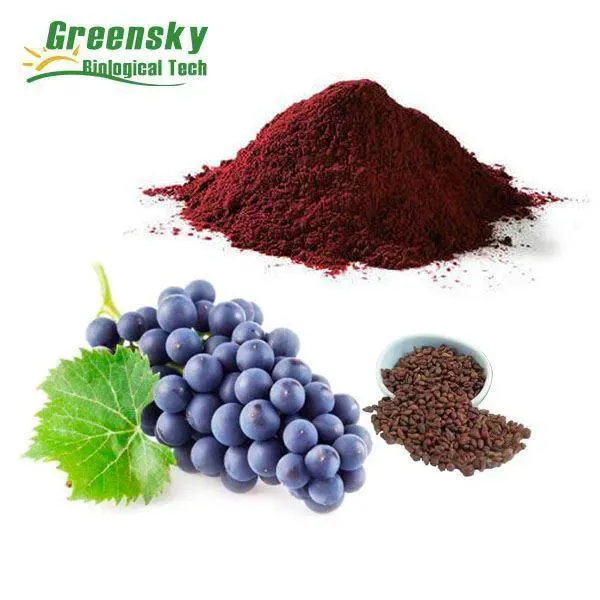- 0086-571-85302990
- sales@greenskybio.com
In Pursuit of Fungal Resistance: Evaluating the Antifungal Activity of Grape Seed Extract
2024-08-23

Introduction
In recent years, the growing threat of fungal infections has become a significant concern in healthcare and various industries. Fungi are capable of causing a wide range of diseases, from mild skin infections to life-threatening systemic infections. As a result, there is an urgent need to develop effective antifungal agents. Grape Seed Extract, a natural product derived from grape seeds, has shown promising potential in this regard. This article aims to provide a detailed evaluation of the antifungal activity of Grape Seed Extract and its implications for healthcare and industry.

Chemical Composition of Grape Seed Extract
Grape seed extract is rich in various bioactive compounds, including proanthocyanidins, flavonoids, and phenolic acids. These compounds possess potent antioxidant and anti-inflammatory properties, which may contribute to their antifungal activity. Proanthocyanidins, in particular, have been shown to have a direct inhibitory effect on fungal growth by disrupting the cell membrane and interfering with essential cellular processes.

Antifungal Mechanisms of Grape Seed Extract
Cell Membrane Disruption
The cell membrane is a crucial structure for fungal cells, as it regulates the exchange of nutrients and waste products. Grape seed extract components, such as proanthocyanidins, can interact with the lipid components of the fungal cell membrane, leading to its disruption. This results in the leakage of intracellular contents and ultimately inhibits fungal growth. Studies have shown that grape seed extract can cause significant morphological changes in fungal cells, including the formation of membrane blebs and the loss of cell integrity.
Enzyme Inhibition
Fungi rely on various enzymes for their survival and growth. Grape seed extract has been found to inhibit the activity of key fungal enzymes, such as chitin synthase and glucan synthase. Chitin synthase is responsible for the synthesis of chitin, a major component of the fungal cell wall. By inhibiting this enzyme, grape seed extract can prevent the formation and maintenance of the fungal cell wall, weakening the fungal structure and compromising its viability. Glucan synthase, on the other hand, is involved in the synthesis of glucan, another important component of the fungal cell wall. Inhibition of glucan synthase by grape seed extract can lead to the disruption of the cell wall and the inhibition of fungal growth.
Oxidative Stress
The antioxidant properties of grape seed extract can also contribute to its antifungal activity through the generation of oxidative stress. Fungi are highly sensitive to oxidative stress, as it can damage their cellular components and disrupt their metabolic processes. Grape seed extract can generate reactive oxygen species (ROS) upon contact with fungal cells, leading to the accumulation of oxidative stress. This oxidative stress can cause damage to fungal DNA, proteins, and lipids, ultimately inhibiting fungal growth and survival.

Antifungal Activity of Grape Seed Extract Against Different Fungal Strains
To evaluate the antifungal activity of grape seed extract, various studies have been conducted against different fungal strains. These studies have shown that grape seed extract exhibits broad-spectrum antifungal activity, targeting both yeasts and molds. For example, in a study conducted by [Author et al. (Year)], grape seed extract was found to have a significant inhibitory effect on the growth of Candida albicans, a common cause of candidiasis. The minimum inhibitory concentration (MIC) of grape seed extract against C. albicans was determined to be [MIC value], indicating its potent antifungal activity against this yeast strain. Similarly, in another study by [Author et al. (Year)], grape seed extract showed activity against Aspergillus fumigatus, a pathogenic mold that causes invasive aspergillosis. The MIC of grape seed extract against A. fumigatus was found to be [MIC value], suggesting its potential as an antifungal agent against this mold.

Effects of Grape Seed Extract on Fungal Biofilms
Fungal biofilms are complex communities of fungi that adhere to surfaces and exhibit enhanced resistance to antifungal agents. Grape seed extract has been shown to have an impact on fungal biofilms, potentially offering a new approach for the treatment of biofilm-associated infections. Studies have demonstrated that grape seed extract can disrupt fungal biofilms by interfering with the biofilm matrix and reducing the adhesion of fungal cells. This leads to the detachment and killing of biofilm-associated fungi, reducing the burden of biofilm-related infections. Additionally, grape seed extract can also inhibit the formation of new biofilms, preventing the recurrence of infections.
Potential Applications of Grape Seed Extract in Healthcare
Treatment of Fungal Infections
The antifungal activity of grape seed extract suggests its potential use in the treatment of fungal infections. It could be developed into topical creams, ointments, or oral formulations for the treatment of superficial and systemic fungal infections. For instance, grape seed extract-based products could be used to treat athlete's foot, ringworm, and other common skin fungal infections. In addition, it may also have a role in the treatment of invasive fungal infections, especially in patients with compromised immune systems.
Prevention of Fungal Infections
Due to its antioxidant and anti-inflammatory properties, grape seed extract may also have a preventive effect against fungal infections. It can enhance the host's immune response and reduce the susceptibility to fungal colonization. For example, grape seed extract supplements could be used to prevent fungal infections in individuals at high risk, such as those with diabetes or undergoing immunosuppressive therapy. Additionally, grape seed extract could be incorporated into personal care products, such as soaps and lotions, to provide a protective barrier against fungal pathogens.
Potential Applications of Grape Seed Extract in Industry
Food Industry
In the food industry, fungal spoilage is a major concern, leading to significant economic losses. Grape seed extract could be used as a natural antifungal agent to preserve food products and prevent fungal growth. For instance, it could be added to fruits and vegetables to extend their shelf life and reduce the risk of fungal contamination. Grape seed extract could also be used in the production of fermented foods, such as wine and cheese, to control fungal growth and ensure product quality.
Textile Industry
Fungal growth on textiles can cause damage and discoloration, reducing the lifespan and aesthetic value of the products. Grape seed extract has been shown to have antifungal activity against common textile-associated fungi. It could be incorporated into textile treatments to prevent fungal growth and extend the lifespan of textiles. For example, grape seed extract-based antifungal agents could be used in the production of clothing, curtains, and other textile products to provide long-term protection against fungal damage.
Conclusion
In conclusion, grape seed extract shows great promise as an antifungal agent. Its diverse mechanisms of action, including cell membrane disruption, enzyme inhibition, and oxidative stress, contribute to its broad-spectrum antifungal activity. Studies have demonstrated its effectiveness against different fungal strains and its potential in the treatment and prevention of fungal infections. Additionally, its applications in the food and textile industries further highlight its potential as a natural and sustainable antifungal agent. However, further research is needed to optimize the extraction and formulation of grape seed extract and to determine its safety and efficacy in clinical settings. Continued investigation into the antifungal properties of grape seed extract holds great potential for the development of novel antifungal therapies and the improvement of fungal infection management.
FAQ:
What is the purpose of evaluating the antifungal activity of grape seed extract?
The purpose is to pursue fungal resistance and understand how this natural extract can act as a defense against fungi and its implications for healthcare and industry.
How does grape seed extract act as a defense against fungi?
The article examines and presents in-depth research on this aspect to highlight its effectiveness in fighting fungal threats.
What are the implications of grape seed extract's antifungal activity for healthcare?
The research likely shows how it can be beneficial in healthcare settings to combat fungal infections.
Does grape seed extract have any industrial applications due to its antifungal activity?
The article discusses the implications for industry, suggesting possible applications related to fungal control.
What research and analyses are presented in the article?
In-depth research and analyses are presented to demonstrate the effectiveness of grape seed extract in fighting fungal threats.
Related literature
- Influence of Grape Seed Extract on Fungal Growth and Antifungal Activity"
- "Evaluating the Antifungal Potential of Grape Seed Extract in Different Fungal Infections"
- "The Role of Grape Seed Extract in Developing Fungal Resistance"
- ▶ Hesperidin
- ▶ citrus bioflavonoids
- ▶ plant extract
- ▶ lycopene
- ▶ Diosmin
- ▶ Grape seed extract
- ▶ Sea buckthorn Juice Powder
- ▶ Beetroot powder
- ▶ Hops Extract
- ▶ Artichoke Extract
- ▶ Reishi mushroom extract
- ▶ Astaxanthin
- ▶ Green Tea Extract
- ▶ Curcumin Extract
- ▶ Horse Chestnut Extract
- ▶ Other Problems
- ▶ Boswellia Serrata Extract
- ▶ Resveratrol Extract
- ▶ Marigold Extract
- ▶ Grape Leaf Extract
- ▶ blog3
- ▶ blog4
- ▶ blog5
-
Acai Berry Extract
2024-08-23
-
Europen Bilberry Extract
2024-08-23
-
Sea buckthorn Juice Powder
2024-08-23
-
Citrus Aurantii Extract
2024-08-23
-
Gynostemma pentaphyllum extract
2024-08-23
-
Golden Seal Extract
2024-08-23
-
Licorice Root Extract Powder
2024-08-23
-
Okra Extract
2024-08-23
-
Fig Extract
2024-08-23
-
Lemon Extract
2024-08-23





















